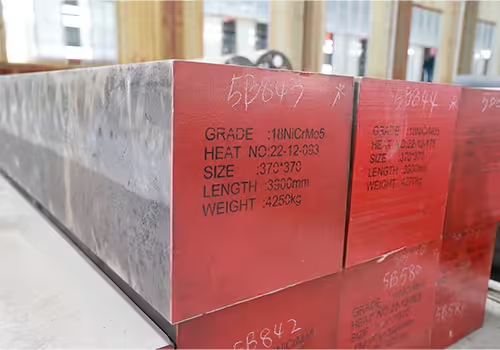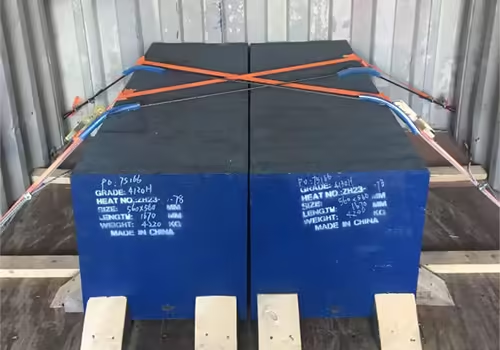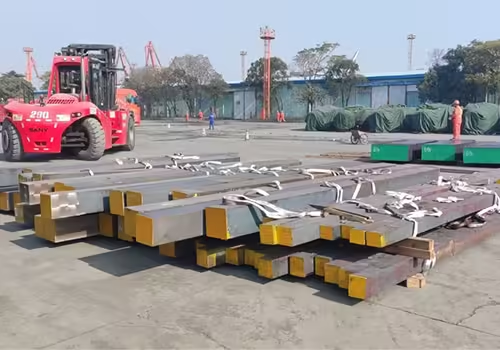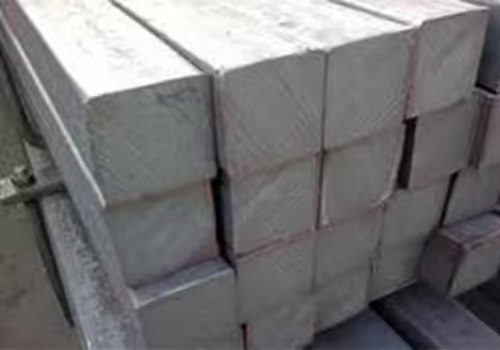
Why 1020 Carbon Steel is a Reliable Choice for Manufacturers
Table of Contents
Introduction
In the manufacturing industry, selecting the right material is crucial for ensuring product quality, durability, and cost-effectiveness. Among the various materials available, 1020 carbon steel stands out as a reliable and versatile option. This blog will delve into the reasons why 1020 carbon steel is a preferred choice for manufacturers, exploring its properties, applications, advantages, and more.
What is 1020 Carbon Steel?


Composition and Properties
1020 carbon steel is a low-carbon steel that contains approximately 0.20% carbon, along with small amounts of manganese, phosphorus, and sulfur. Its low carbon content makes it easy to machine, weld, and form, while still providing sufficient strength and hardness for a wide range of applications. The material’s balanced composition ensures it offers excellent mechanical properties, including good ductility and toughness.
Grades and Standards
1020 carbon steel is classified under the ASTM A29 standard, which specifies the general requirements for carbon and alloy steel bars. It is also available in various grades, each tailored to meet specific industry needs. These grades ensure that manufacturers can find a suitable variant of 1020 carbon steel for their particular applications.
Advantages of 1020

Machinability
One of the standout features of this low-carbon steel is its excellent machinability. The material can be easily cut, drilled, and shaped without requiring specialized tools or techniques. This ease of machining significantly reduces production time and costs, making it an attractive option for manufacturers. The ability to work with standard machining equipment allows for greater flexibility in production processes, enabling manufacturers to achieve precise tolerances and intricate designs with minimal effort. Furthermore, the smooth finish that can be achieved with this material reduces the need for additional surface treatments, further streamlining the manufacturing process.
Weldability
Another significant advantage of this steel is its high weldability. The material allows for strong and durable joints, whether using traditional welding methods or advanced techniques. This ensures consistent and reliable results, making it suitable for fabricating complex structures and components. The ease of welding also means that repairs and modifications can be carried out with minimal difficulty, extending the lifespan of the products made from this material. Additionally, the material’s ability to maintain its structural integrity during the welding process reduces the risk of defects, ensuring high-quality end products.
Cost-Effectiveness
When compared to high-carbon and alloy steels, this low-carbon variant is more affordable. Its cost-effectiveness, combined with its excellent properties, makes it a practical choice for manufacturers looking to balance quality and budget. The lower cost of raw materials translates to reduced production expenses, allowing manufacturers to offer competitive pricing for their products. Moreover, the material’s durability and longevity mean that products made from it require less frequent replacement, providing long-term cost savings for both manufacturers and end-users.
Versatility
The versatility of this steel is another reason for its widespread use. It can be employed in various industries, from automotive and construction to machinery and appliances. Its adaptability to different manufacturing processes further enhances its appeal. The material’s ability to be easily formed, machined, and welded allows it to be used in a wide range of applications, from simple components to complex structures. This versatility makes it a go-to material for manufacturers who need a reliable and flexible solution for their diverse production needs. Furthermore, the material’s consistent performance across different applications ensures that it meets the stringent requirements of various industries, making it a trusted choice for manufacturers worldwide.
Durability and Strength
Despite its low carbon content, this steel offers sufficient strength and durability for many applications. Its balanced composition ensures that it can withstand significant stress and strain without compromising its structural integrity. This makes it ideal for use in components that need to endure moderate mechanical loads and environmental conditions. The material’s toughness also means that it can resist wear and tear, reducing the need for frequent maintenance and replacement. This combination of strength and durability ensures that products made from this material can perform reliably over extended periods, providing value to both manufacturers and end-users.
Environmental Benefits
The production and use of this steel also offer environmental benefits. Its recyclability means that it can be reused without losing its properties, contributing to sustainable manufacturing practices. This reduces waste and conserves natural resources, making it an environmentally friendly choice. Additionally, the lower energy required to produce this steel compared to high-carbon and alloy steels results in reduced greenhouse gas emissions. This aligns with global efforts to reduce the carbon footprint of industrial activities, making it a responsible choice for manufacturers who prioritize sustainability.
Ease of Heat Treatment
Another advantage of this steel is its ease of heat treatment. The material can be easily annealed, normalized, or case-hardened to achieve the desired properties for specific applications. This flexibility allows manufacturers to tailor the material’s characteristics to meet the exact requirements of their products. For example, heat treatment can enhance the material’s hardness and wear resistance, making it suitable for components that need to endure high levels of friction. The ability to modify the material’s properties through heat treatment further enhances its versatility and applicability in various industries.
Corrosion Resistance
While not as corrosion-resistant as stainless steel, this low-carbon steel can still offer adequate protection against rust and oxidation when properly treated. Surface treatments such as painting, coating, or galvanizing can significantly improve its resistance to environmental factors, making it suitable for use in outdoor applications. This added layer of protection ensures that products made from this material can maintain their appearance and functionality even in harsh conditions. The material’s ability to resist corrosion, combined with its other advantageous properties, makes it a reliable choice for manufacturers who need durable and long-lasting products.
Availability and Supply Chain
The widespread availability of this steel is another factor that contributes to its popularity among manufacturers. The material is readily accessible from numerous suppliers, ensuring a stable and reliable supply chain. This availability reduces the risk of production delays and allows manufacturers to maintain consistent production schedules. Additionally, the material’s popularity means that there is a wealth of knowledge and expertise available, making it easier for manufacturers to source, process, and utilize the material effectively. The robust supply chain and extensive industry knowledge further enhance the material’s appeal, making it a dependable choice for manufacturers across various sectors.
Applications of 1020 Carbon Steel


Automotive Industry
In the automotive sector, 1020 carbon steel is used to manufacture components such as gears, shafts, and axles. Its strength and durability ensure these parts can withstand the rigors of daily use, contributing to vehicle longevity and performance.
Construction Industry
The construction industry benefits from 1020 carbon steel’s use in structural elements like beams, columns, and reinforcement bars. Its ability to bear heavy loads and resist environmental factors makes it a reliable material for building sturdy and safe structures.
Machinery and Equipment
Manufacturers of machinery and equipment often choose 1020 carbon steel for parts that require precision and reliability. Its machinability and weldability allow for the production of intricate components that perform consistently under demanding conditions.
Appliances and Consumer Goods
1020 carbon steel is also found in household appliances and consumer goods. Its affordability and ease of fabrication make it an ideal material for producing durable and cost-effective products that meet consumer needs.
Comparison of 1020 Steel with Other Steels
1020 vs. 1045 Carbon Steel
While both 1020 and 1045 carbon steels are popular choices, they differ in carbon content and properties. 1020 carbon steel, with its lower carbon content, is easier to machine and weld, making it suitable for applications requiring flexibility and ease of fabrication. In contrast, 1045 carbon steel, with higher carbon content, offers greater strength and hardness, making it ideal for parts that need to endure more stress.
1020 vs. 1018 Carbon Steel
1020 and 1018 carbon steels are quite similar, but 1020 has slightly higher carbon and manganese content. This difference gives 1020 carbon steel marginally better strength and hardness, making it a preferred choice for applications that require a bit more durability without sacrificing machinability.
Table: Properties of 1020 Steel
| Property | Value |
|---|---|
| Carbon Content | 0.18% – 0.23% |
| Manganese Content | 0.30% – 0.60% |
| Tensile Strength | 420 MPa – 790 MPa |
| Yield Strength | 350 MPa |
| Elongation | 15% – 25% |
| Hardness (Brinell) | 111 – 149 |
| Density | 7.85 g/cm³ |
Environmental Impact and Sustainability
Recyclability
1020 carbon steel is fully recyclable, contributing to sustainable manufacturing practices. Its ability to be reused without losing its properties makes it an environmentally friendly choice, reducing waste and conserving natural resources.
Energy Efficiency
The production of 1020 carbon steel requires less energy compared to high-carbon and alloy steels. This energy efficiency translates to lower greenhouse gas emissions, aligning with global efforts to reduce the carbon footprint of industrial activities.
Conclusion
1020 carbon steel is a reliable and versatile material that offers numerous advantages for manufacturers. Its excellent machinability, weldability, cost-effectiveness, and versatility make it a preferred choice across various industries. Additionally, its recyclability and energy efficiency contribute to sustainable manufacturing practices. Whether you’re in the automotive, construction, machinery, or consumer goods industry, 1020 carbon steel provides a practical and high-quality solution for your manufacturing needs.
FAQ
What makes 1020 steel a preferred choice for manufacturers?
1020 carbon steel is preferred for its excellent machinability, weldability, cost-effectiveness, and versatility. These properties make it suitable for a wide range of applications across various industries.
How does 1020 carbon steel compare to other carbon steels?
Compared to higher carbon steels like 1045, 1020 carbon steel is easier to machine and weld but offers slightly lower strength and hardness. It is also more cost-effective, making it a practical choice for many applications.
Can 1020 carbon steel be used in high-stress applications?
While 1020 carbon steel is not as strong as high-carbon steels, it is still suitable for many applications requiring moderate strength and durability. For high-stress applications, higher carbon or alloy steels may be more appropriate.
Is 1020 carbon steel environmentally friendly?
Yes, 1020 carbon steel is fully recyclable and requires less energy to produce compared to other steels, making it an environmentally friendly option for manufacturers.






